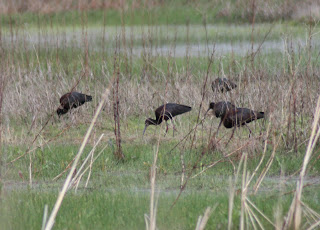KSL our local television station ran a story about studying bird numbers along the Provo River and how they are restoring the river to it's natural habitat. According to the story song bird numbers are overall in decline but happy to report that along the Provo river they have increased. Reading some of the ignorant and uninformed comments on the comment board for this story has prompted me to write this post. I have also included a link to the story at the end of my post. Here are some of my thoughts and some facts and thoughts of some experts:
Who Needs Nature and Birds?
Wild birds are essential components of healthy, functioning natural systems.
- They provide us with "free ecological services." Birds are voracious eaters of weed plants and farm rodents, they help keep insect populations under control, and pollinate and disseminate seeds.
- Diverse bird populations reflect the underlying health of the ecosystem in which they - and we - live.
- As an indicator species, birds can help us learn about the natural biological processes that produce the food, fiber, water and minerals we humans need to survive - and how we can manage the earth's resources to provide a sustainable future for all.
Did you know that the Great Salt Lake and surrounding wetlands support between 2 and 5 million shorebirds, as many as 1.7 million eared grebes, and hundreds of thousands of waterfowl during spring and fall migration.
Because of its importance to migratory birds, the lake was designated a part of the Western Hemisphere Shorebird Reserve Network in 1992. The lake and its marshes provide a resting and staging area for the birds, as well as an abundance of brine shrimp and brine flies that serve as food.
Because of its importance to migratory birds, the lake was designated a part of the Western Hemisphere Shorebird Reserve Network in 1992. The lake and its marshes provide a resting and staging area for the birds, as well as an abundance of brine shrimp and brine flies that serve as food.
Wilson's Phalarope | 500,000 | Largest staging concentration in the world |
Red-Necked Phalarope | 280,000 | Single-day estimate |
American Avocet | 250,000 | Many times higher than any other wetland in the Pacific Flyway |
Black-Necked Stilt | 65,000 | Many times higher than any other wetland in the Pacific Flyway |
Marbled Godwit | 30,000 | Single-day count |
Snowy Plover | 10,000 | The worlds largest assemblage, representing 55% of the entire breeding population west of the Rocky Mts. (Sorry no picture yet) |
Long-Billed Dowitcher | 32,000 | Single-day count |
White Pelican | 18,000 | Breeding adults, one of the three largest colonies in Western North America |
White-Faced Ibis | 7,500 | Breeding adults, world's largest breeding population |
California Gull | 160,000 | Breeding adults, world's largest breeding population |
Eared Grebe | 400,000 | Second largest staging population in North America |
Bald Eagle | >500 | Wintering Eagles associated with Great Salt Lake, one of top 10 winter populations in the lower 48 states |
Source: Utah Division of Wildlife Resources, Don Paul
Birds help our economy:
Birds are also becoming economically important as well. Bird watching is the fastest-growing form of outdoor recreation in the United States, up 155 percent in the last ten years, with more than 71 million Americans describing themselves as interested in birding. People travel to see birds, buy backyard bird feeders, plant gardens for birds and spend money to support bird research and protect bird habitat. Most birders are "baby-boomers," educated, with above average incomes, and they are willing to spend money to watch birds.
ksl.com - Restored songbird habitats proving fruitful along Provo River













Steve, I appreciate the way you include so much good information in your blog posts. Too bad the people who need to know these things the most, prefer to remain willfully ignorant.
ReplyDelete